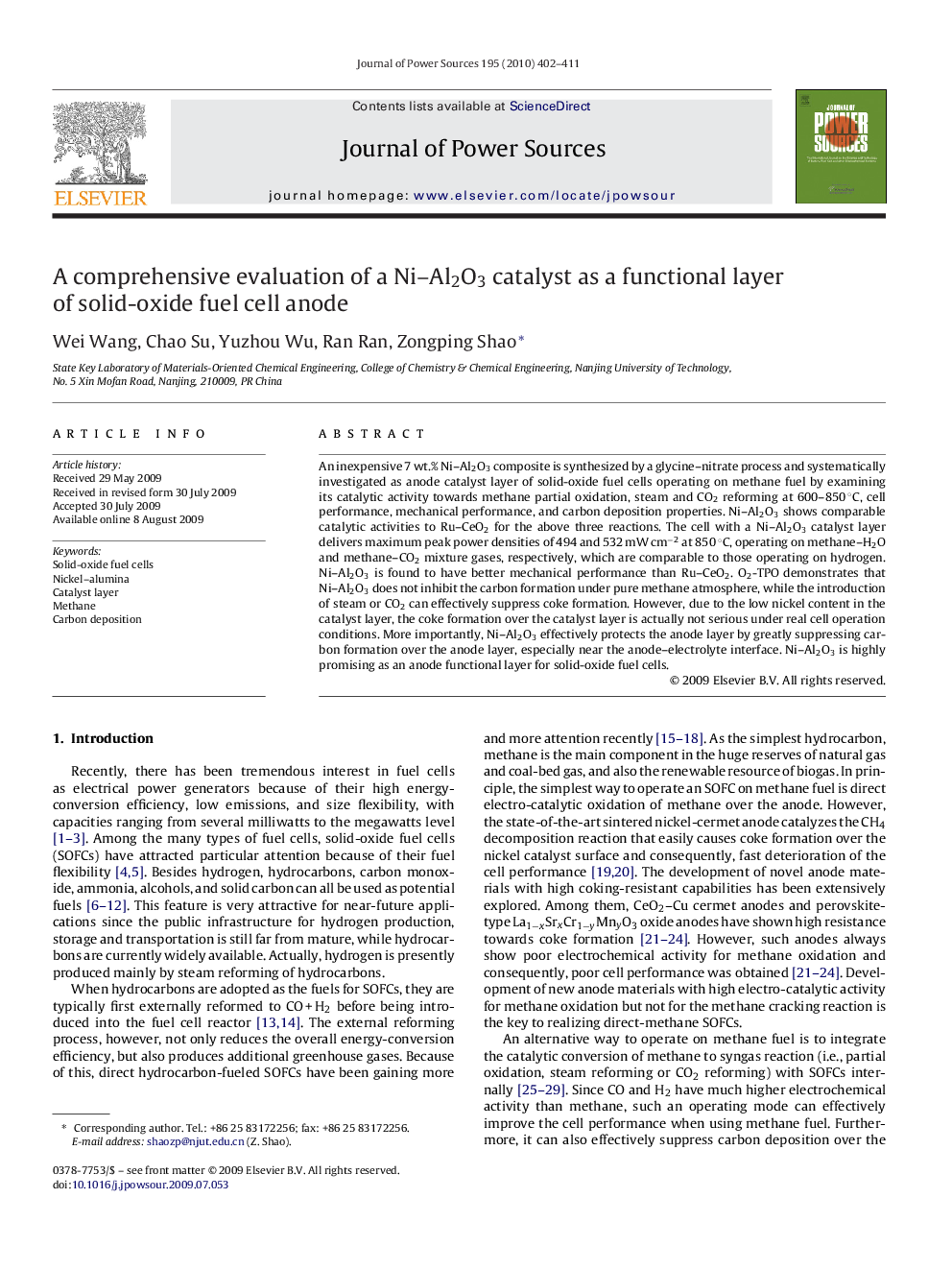| Article ID | Journal | Published Year | Pages | File Type |
|---|---|---|---|---|
| 1293880 | Journal of Power Sources | 2010 | 10 Pages |
An inexpensive 7 wt.% Ni–Al2O3 composite is synthesized by a glycine–nitrate process and systematically investigated as anode catalyst layer of solid-oxide fuel cells operating on methane fuel by examining its catalytic activity towards methane partial oxidation, steam and CO2 reforming at 600–850 °C, cell performance, mechanical performance, and carbon deposition properties. Ni–Al2O3 shows comparable catalytic activities to Ru–CeO2 for the above three reactions. The cell with a Ni–Al2O3 catalyst layer delivers maximum peak power densities of 494 and 532 mW cm−2 at 850 °C, operating on methane–H2O and methane–CO2 mixture gases, respectively, which are comparable to those operating on hydrogen. Ni–Al2O3 is found to have better mechanical performance than Ru–CeO2. O2-TPO demonstrates that Ni–Al2O3 does not inhibit the carbon formation under pure methane atmosphere, while the introduction of steam or CO2 can effectively suppress coke formation. However, due to the low nickel content in the catalyst layer, the coke formation over the catalyst layer is actually not serious under real cell operation conditions. More importantly, Ni–Al2O3 effectively protects the anode layer by greatly suppressing carbon formation over the anode layer, especially near the anode–electrolyte interface. Ni–Al2O3 is highly promising as an anode functional layer for solid-oxide fuel cells.
